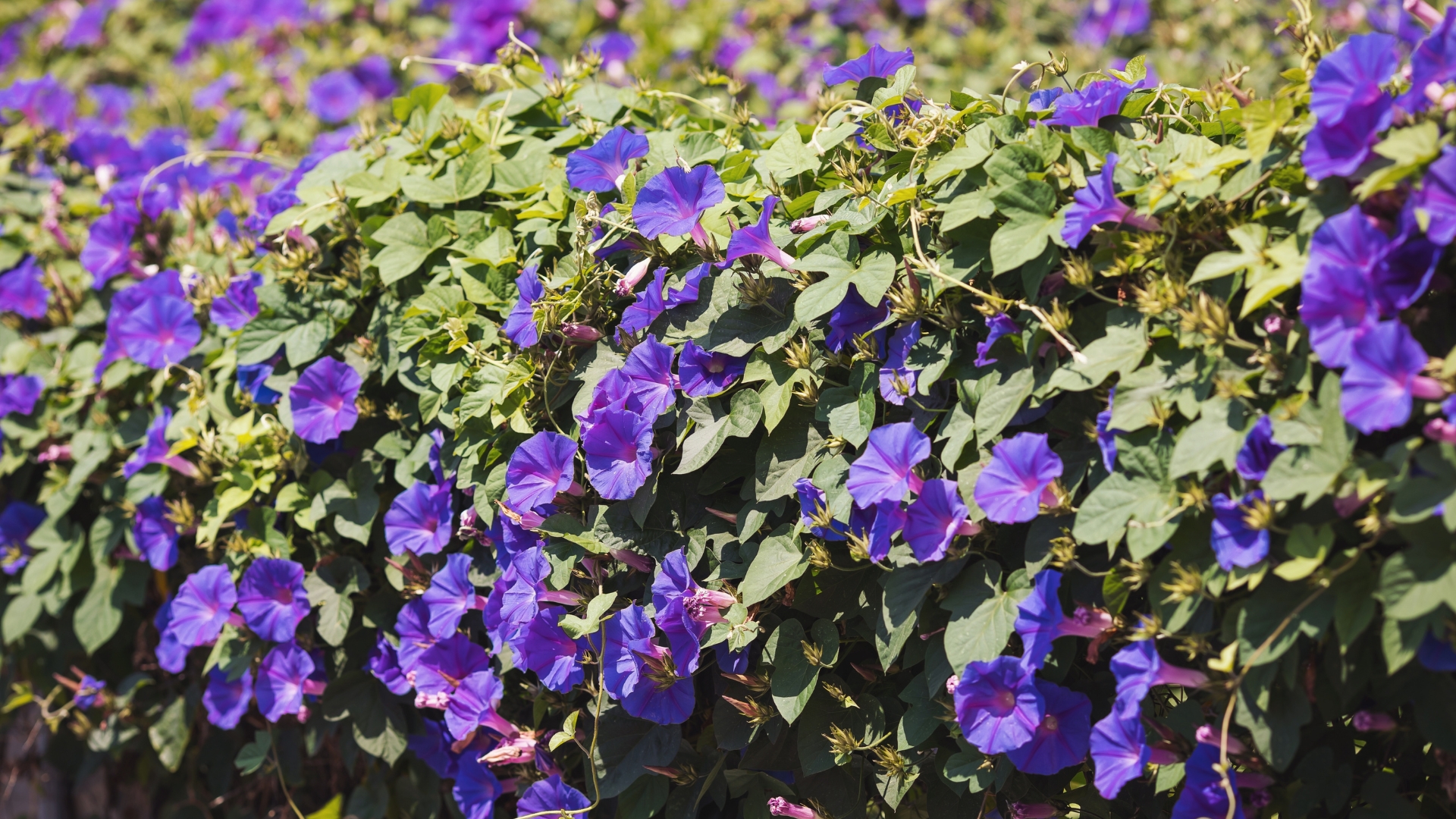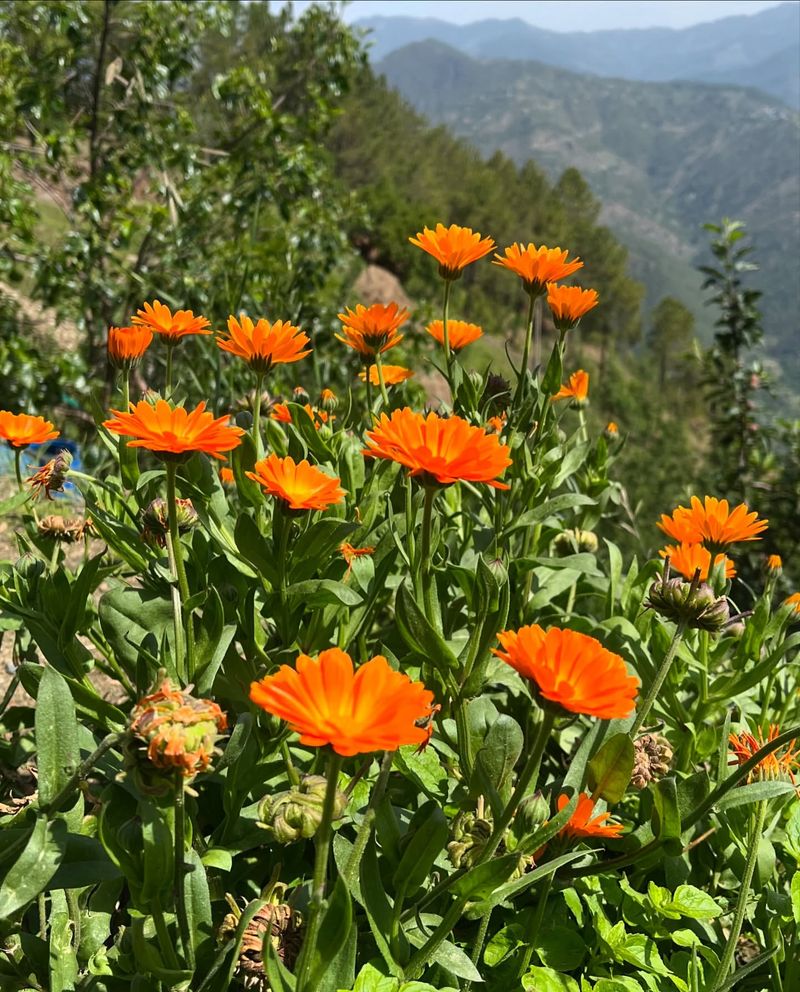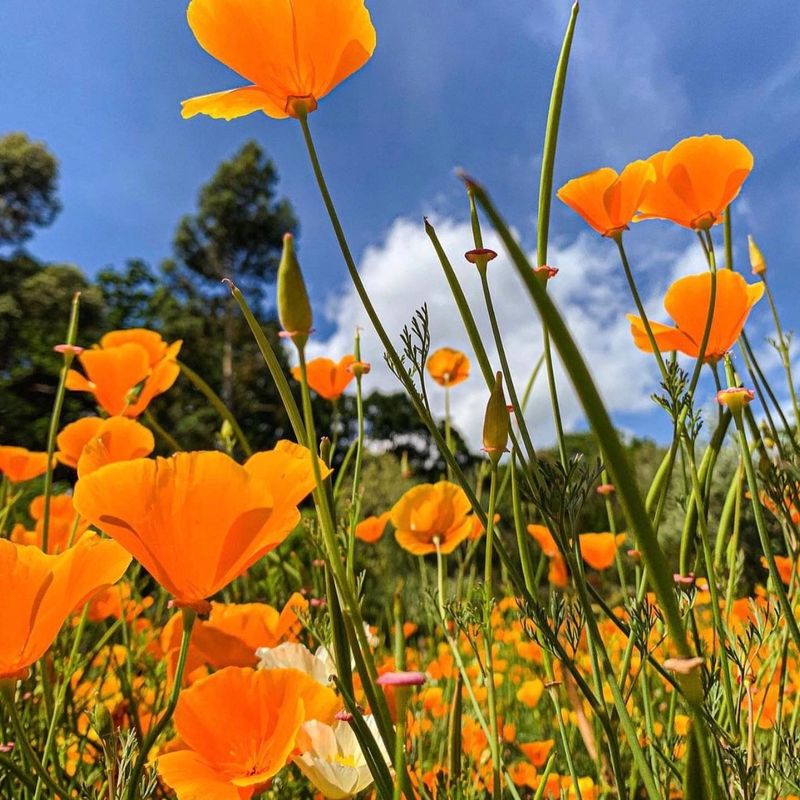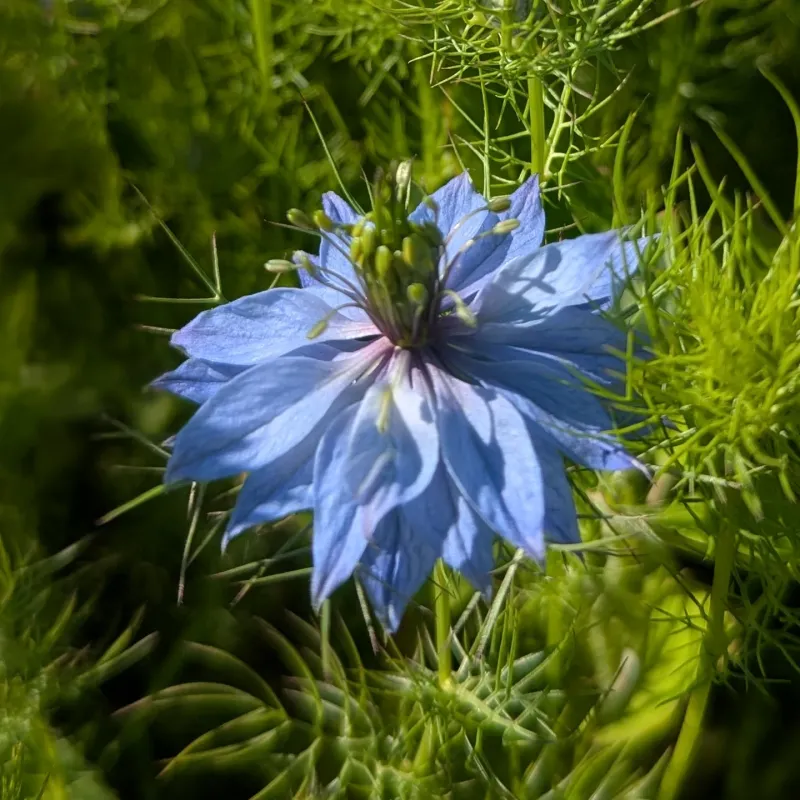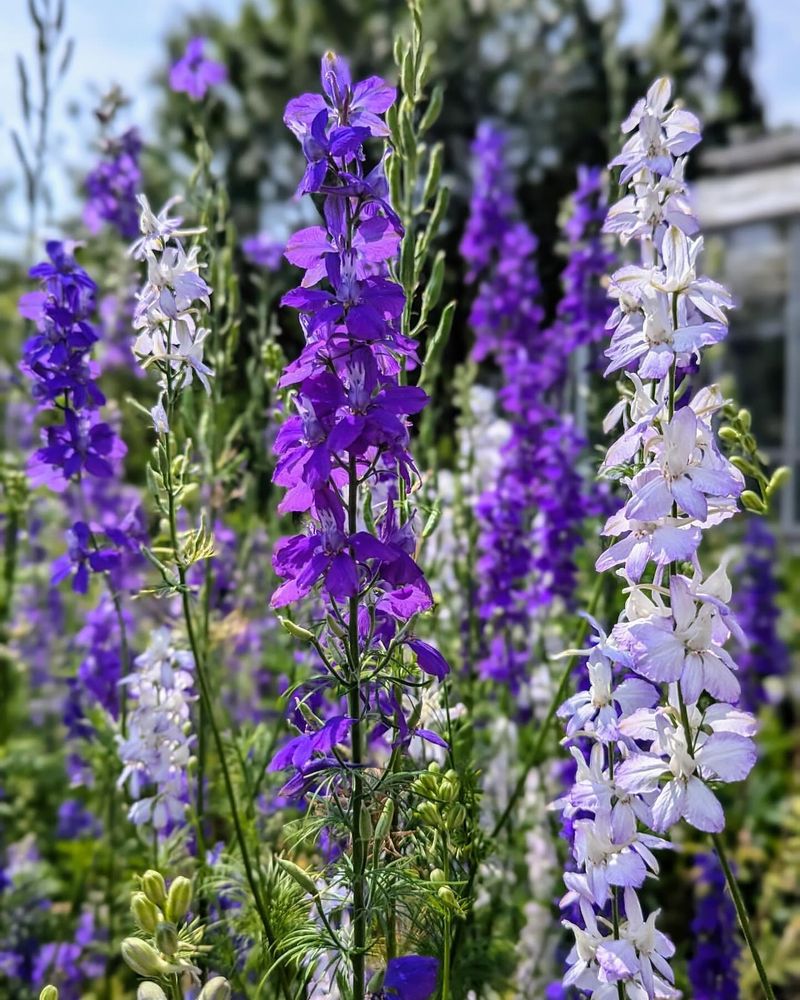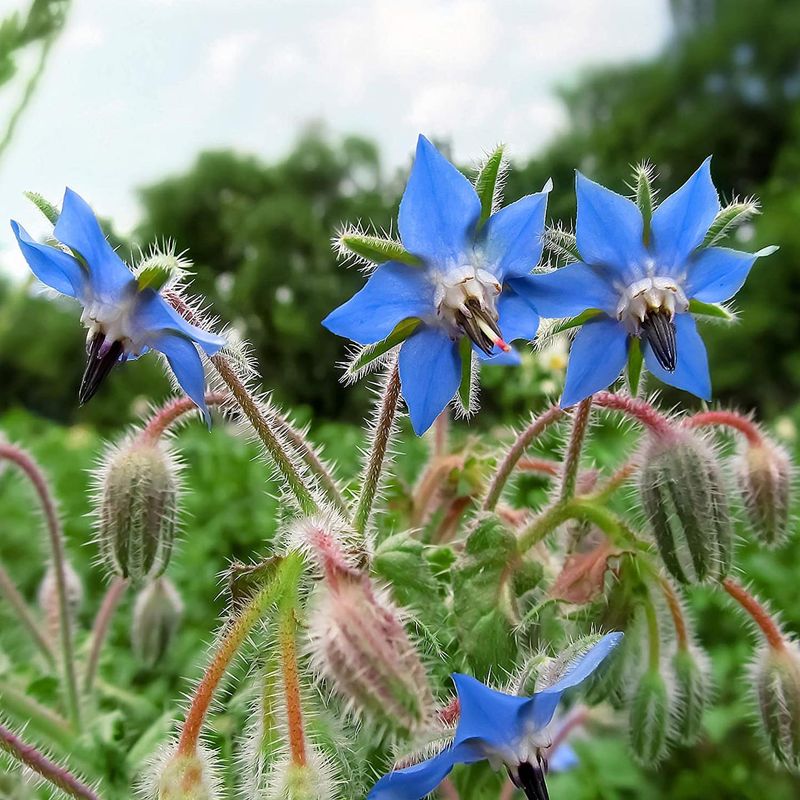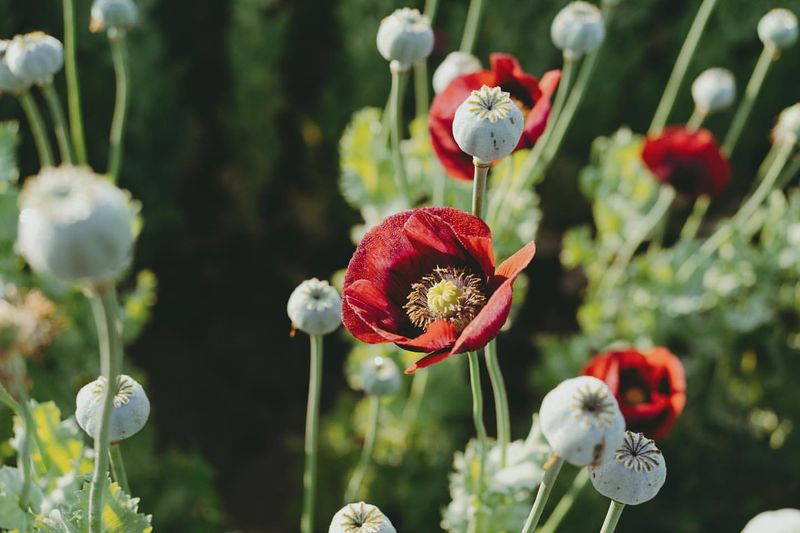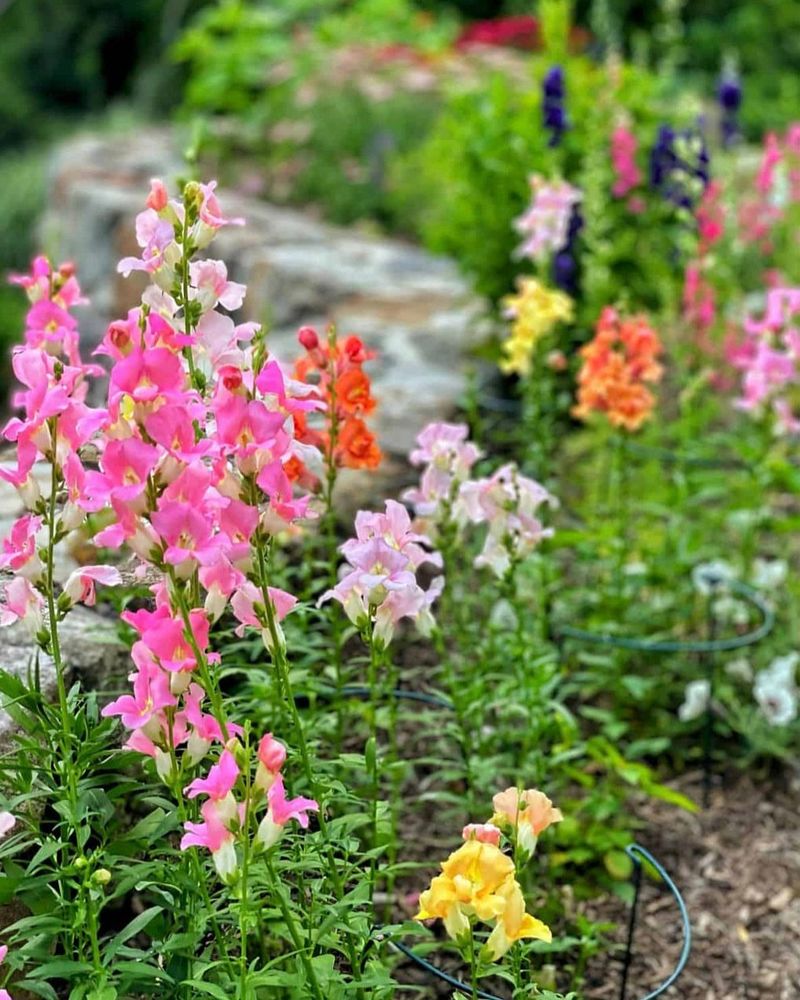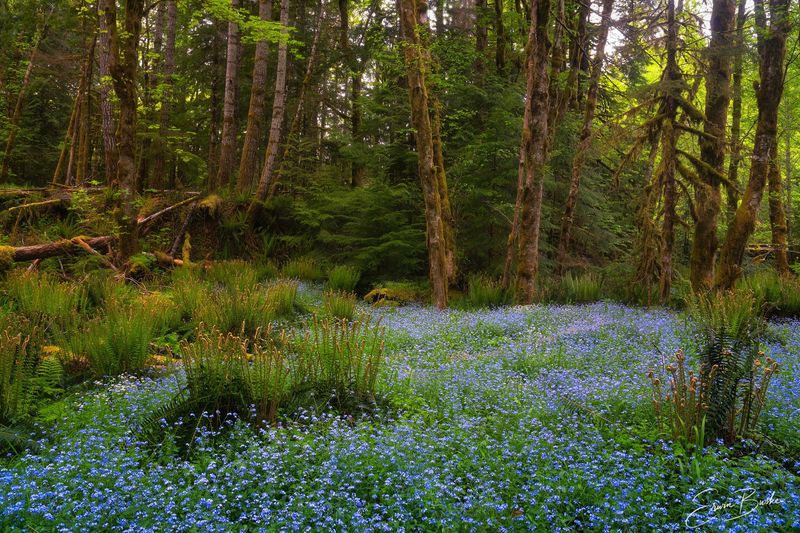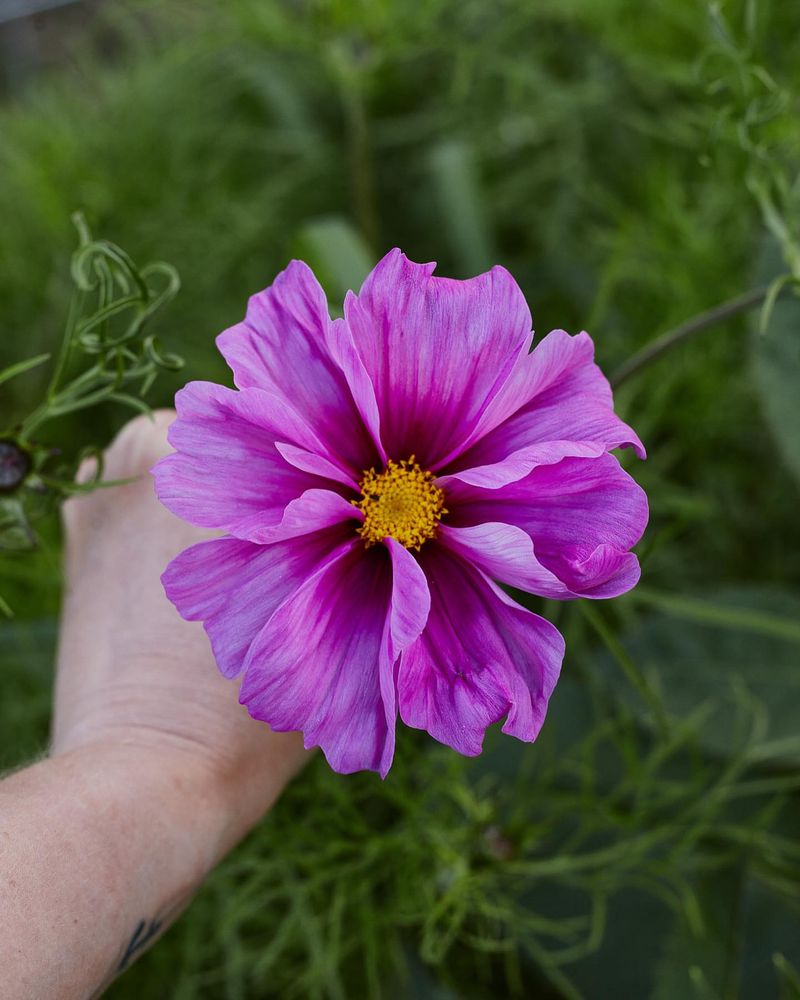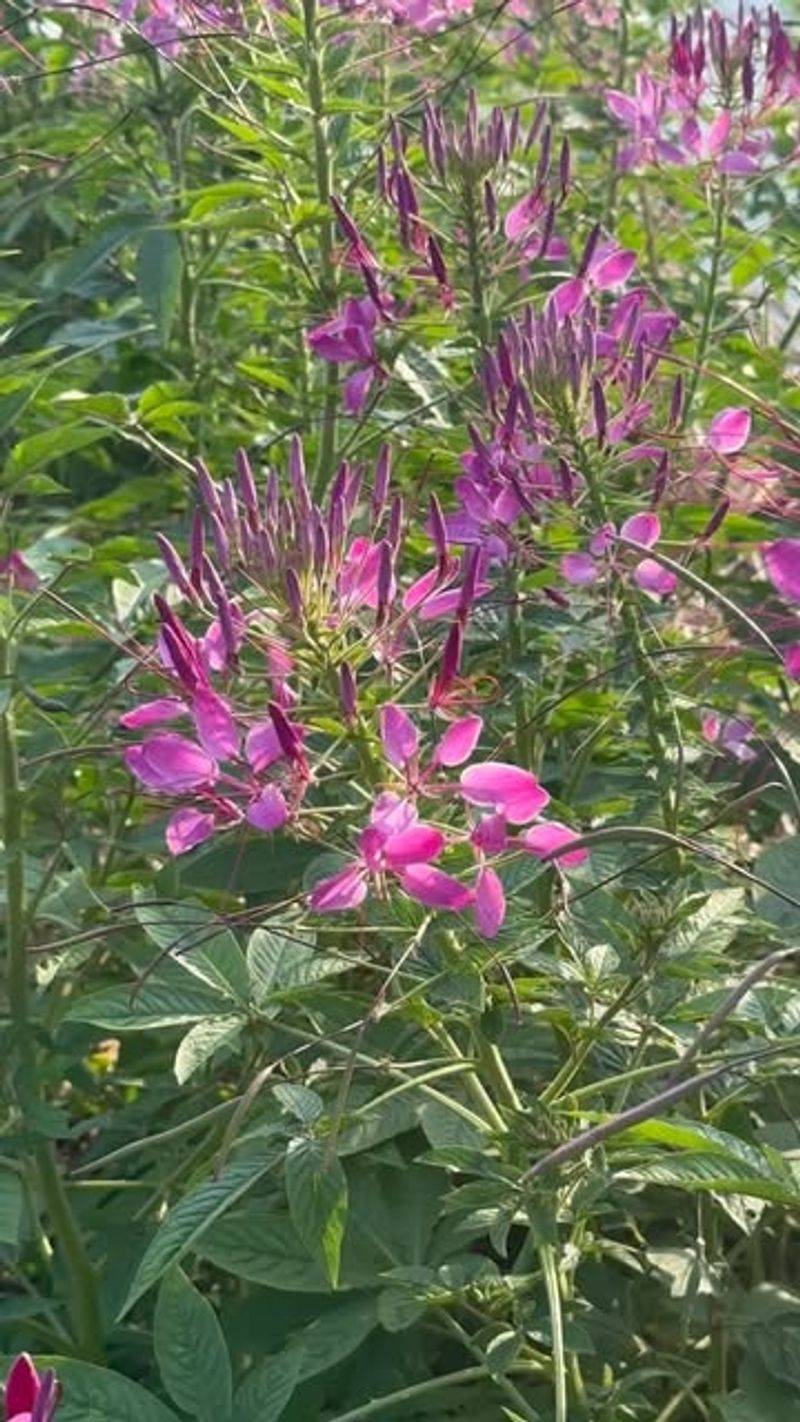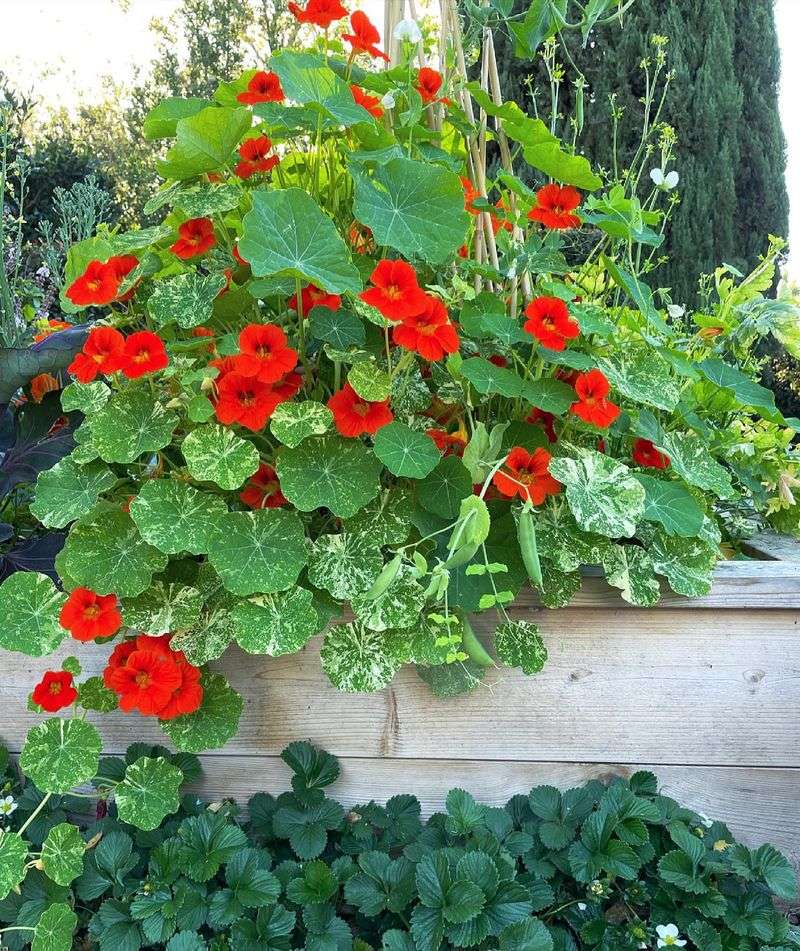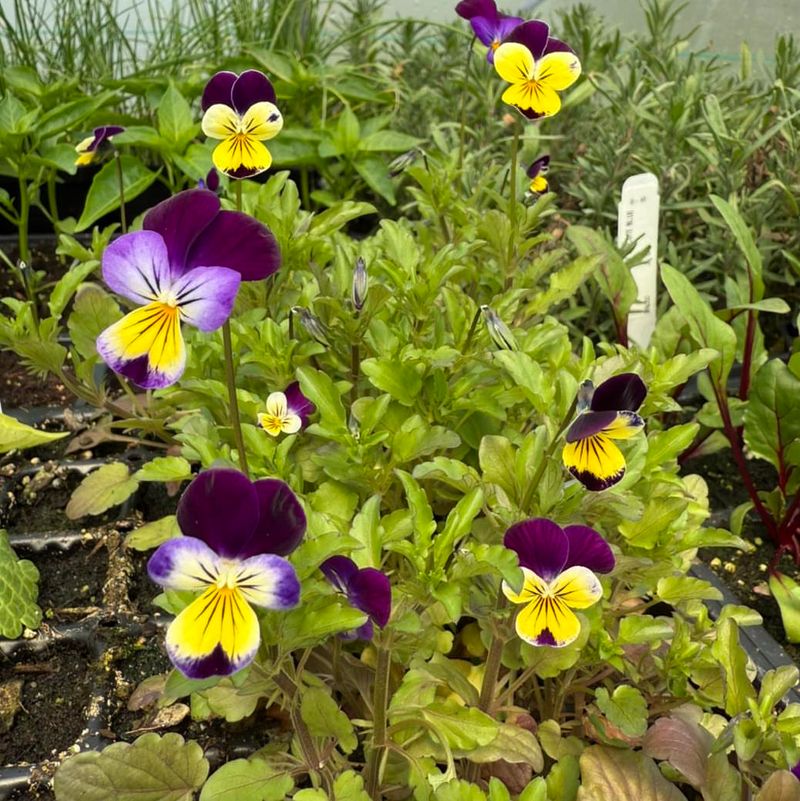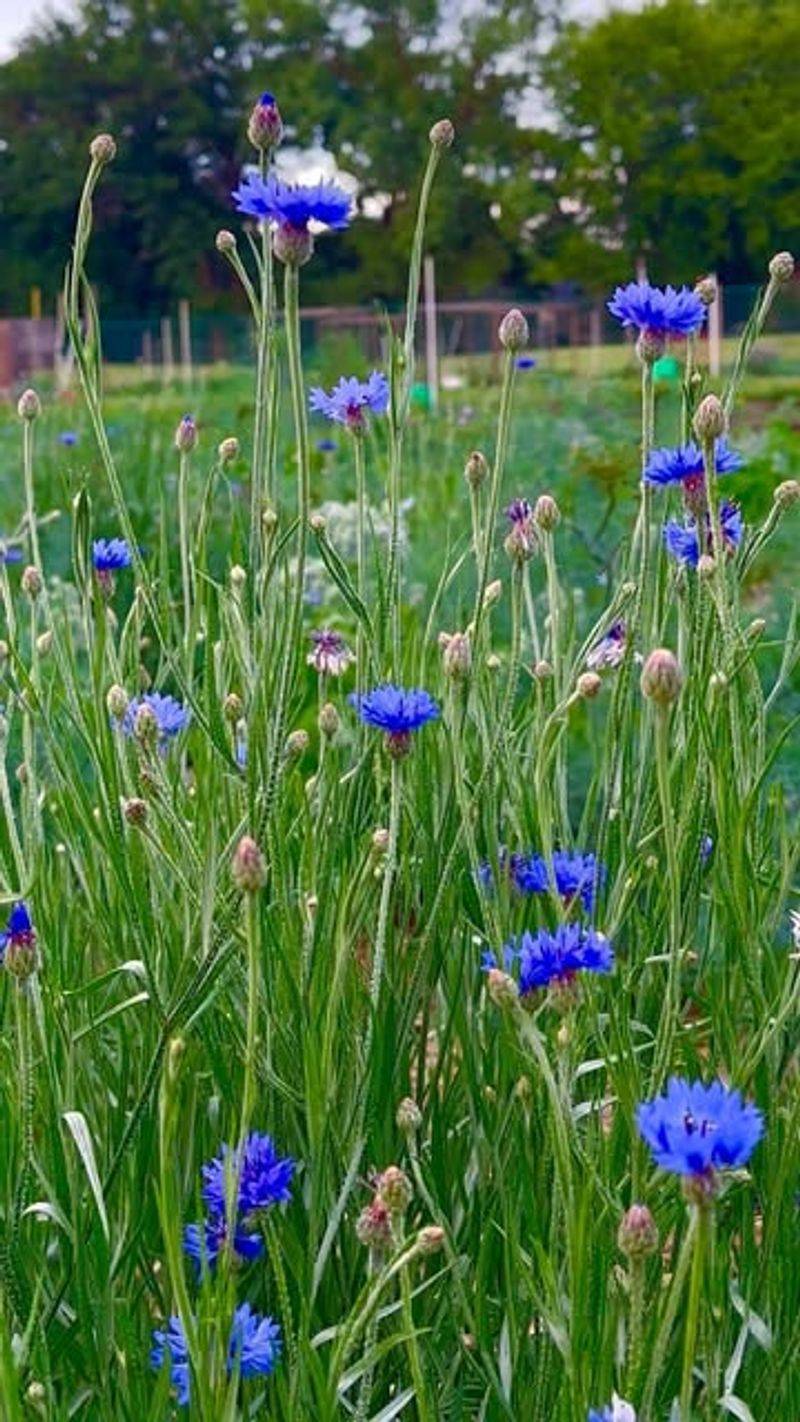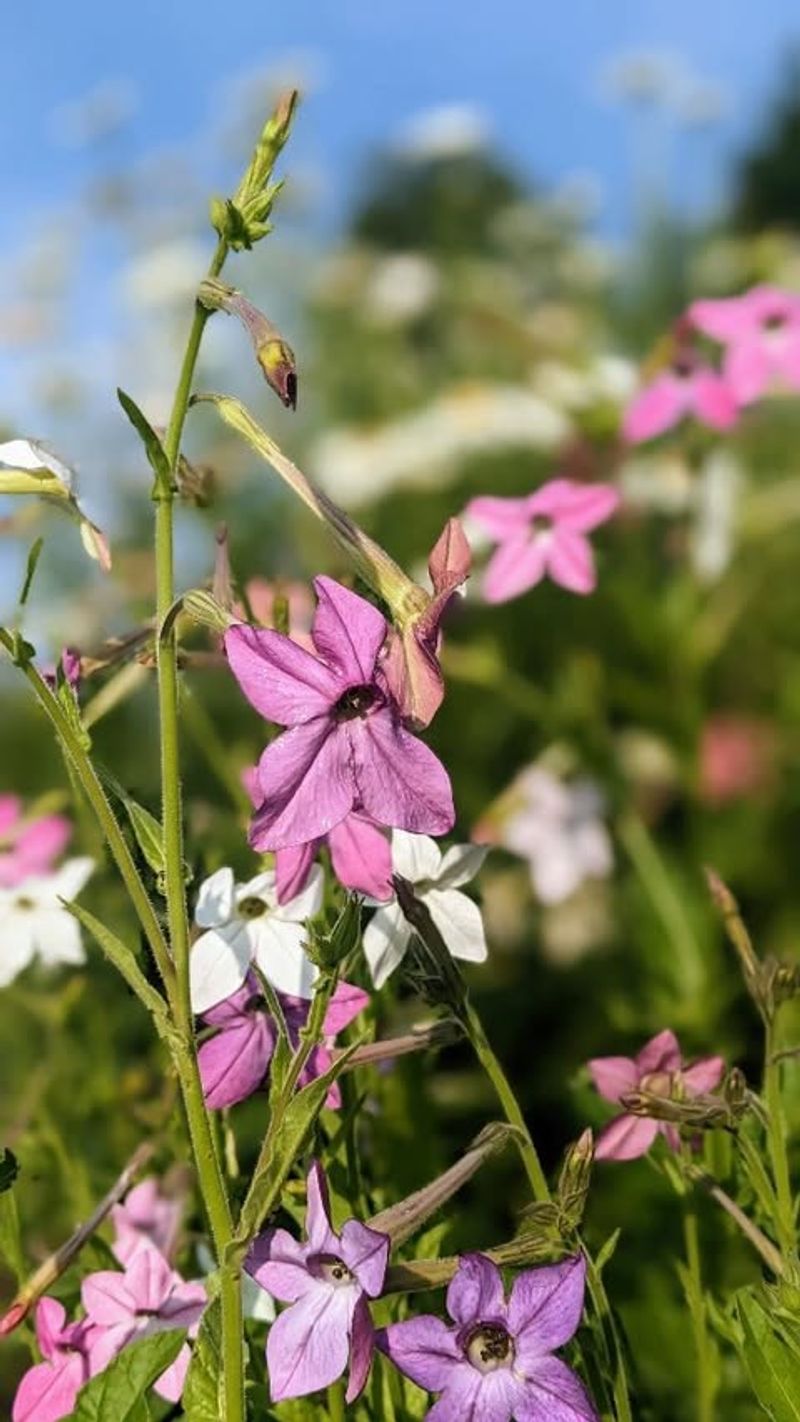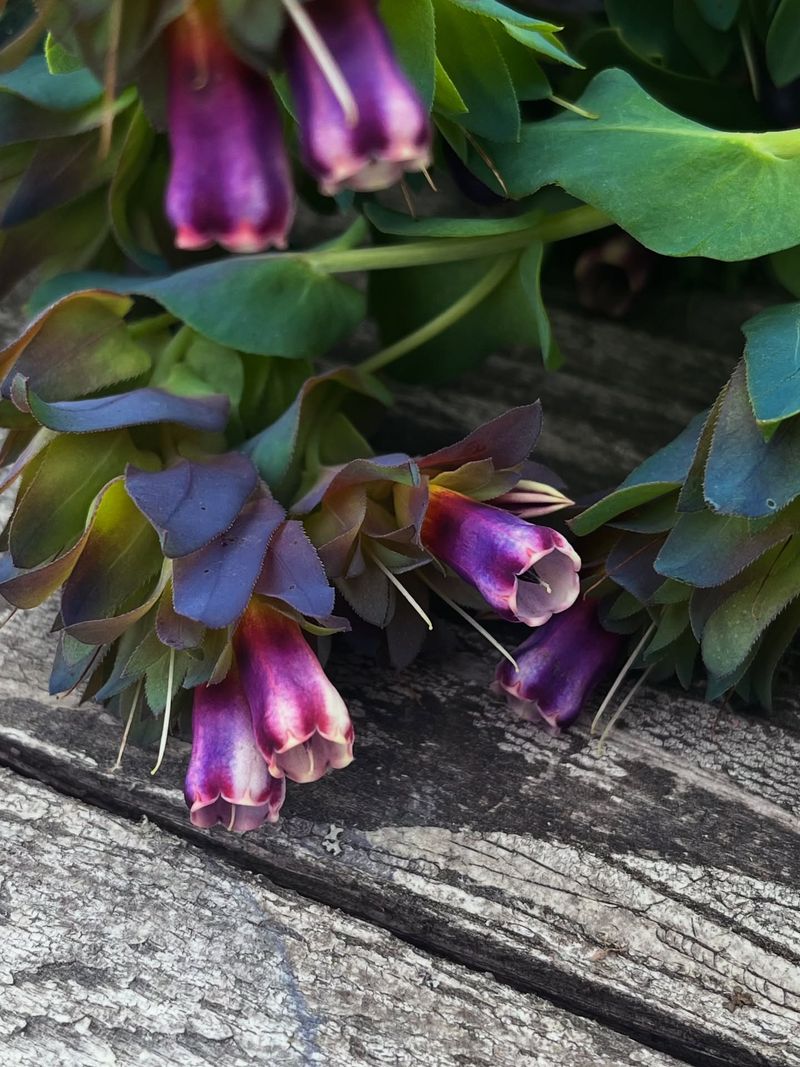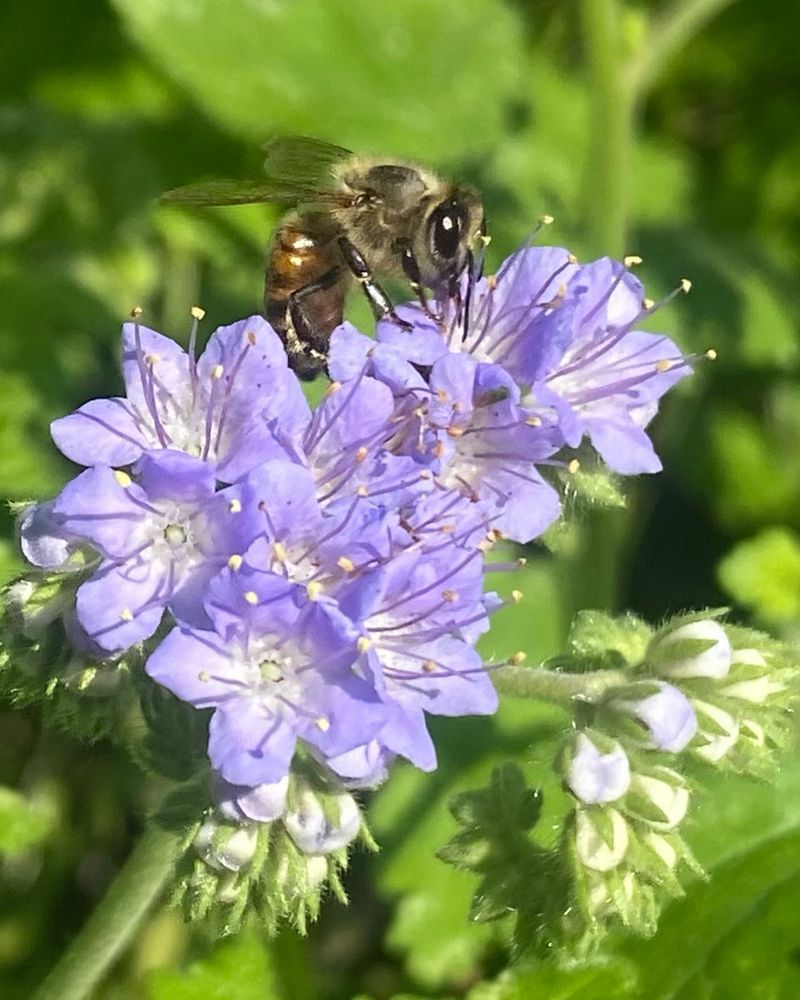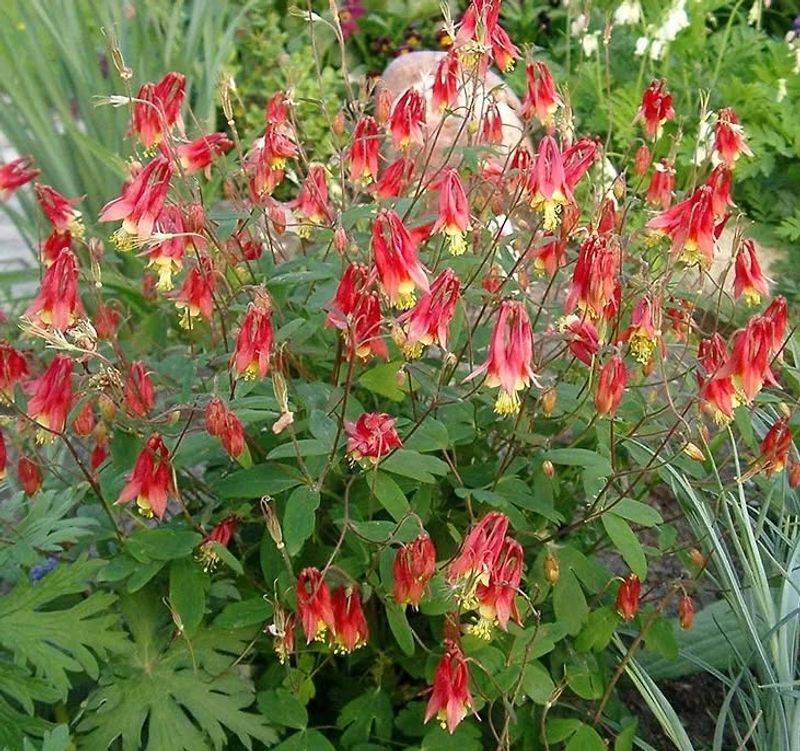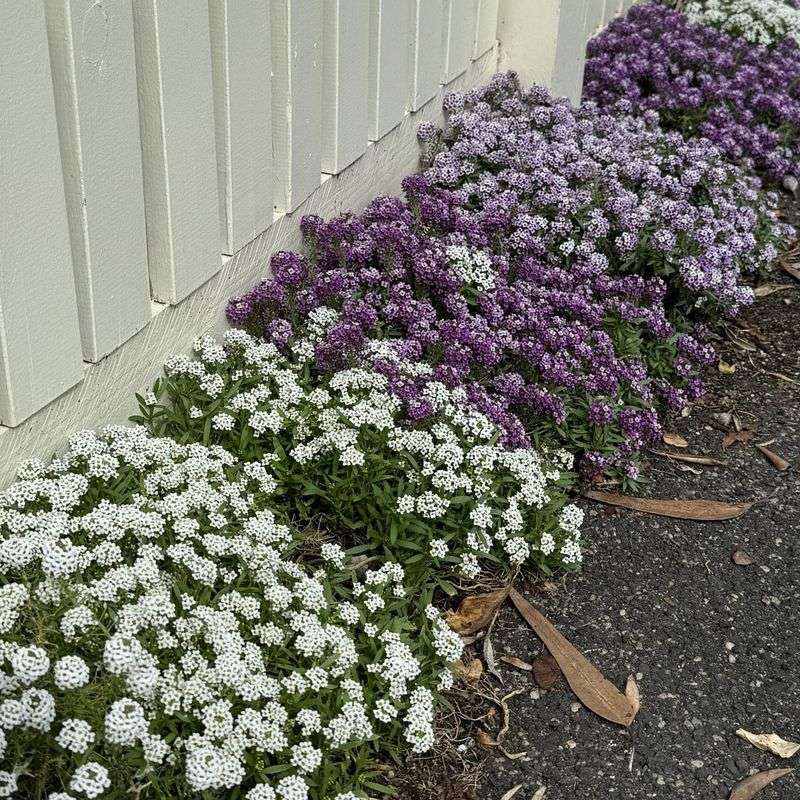Maine’s gardens are turning into comeback stars thanks to self-sowing annuals—they literally reseed themselves and surprise us every spring!
These floral freebies are nature’s gift: poppy blooms one season, cheerful volunteers the next. I watched my garden fill with vibrant surprises this year, and I barely had to lift a finger.
From cheerful calendula to delicate foxglove, they bring color without the fuss or fussing. Ready to sit back, relax, and let your garden do the repeating for you?
1. Calendula
Often called pot marigold, this cheerful orange or yellow flower thrives in Maine’s cooler climate. The daisy-like blooms add bright spots to gardens from early summer until frost.
Seeds germinate readily in cool soil, making them perfect for Maine’s spring conditions. Many gardeners appreciate their edible petals in salads and their natural pest-repelling properties around vegetable gardens.
2. California Poppy
Brilliant orange blooms appear like magic in early summer across Maine gardens. These drought-tolerant beauties prefer poor soil and actually bloom better with neglect.
Silky petals close at night and open with the morning sun, creating daily garden drama. Maine gardeners love how they naturalize in rocky areas and borders, returning more abundantly each year without becoming invasive.
3. Nigella
Commonly called love-in-a-mist, this charming flower features delicate blue blooms surrounded by feathery foliage. After flowering, decorative seed pods develop that are prized in dried arrangements.
Maine’s cool spring temperatures are perfect for triggering germination. Many gardeners in the Pine Tree State deliberately leave the interesting seed pods standing through winter for garden interest and reliable reseeding.
4. Larkspur
Tall spires of pink, purple, or white flowers bring vertical interest to Maine gardens. The cool-loving nature makes them perfect for early summer displays before the heat arrives.
Seeds scattered in fall will sprout early the following spring without any help. Many Maine gardeners find these old-fashioned favorites remind them of their grandparents’ gardens while attracting beneficial pollinators.
5. Borage
Star-shaped blue flowers dangle above fuzzy leaves on this bee-friendly plant. The cucumber-flavored edible flowers make beautiful ice cubes and salad garnishes in Maine kitchens.
Hardy enough to withstand light Maine frosts, borage often produces multiple generations in a single season. Gardeners throughout the state appreciate how it attracts pollinators while self-sowing reliably in vegetable gardens and herb beds.
6. Breadseed Poppy
Dramatic paper-thin blooms in shades from white to deep purple crown tall stems in early summer. After flowering, decorative seed pods develop, perfect for crafts or baking with the tiny edible seeds.
Maine’s cold winters provide the necessary chill period these seeds need. Gardeners throughout the state find these elegant flowers return reliably each year, often in surprising new locations throughout the garden.
7. Snapdragon
Dragon-mouth flowers in rainbow colors bring whimsy to Maine gardens from spring through fall. Children delight in squeezing the sides to make the “dragons” open their mouths.
Maine’s winters aren’t too harsh for the tiny seeds these plants produce in abundance. Gardeners across the state find that shorter varieties self-sow more reliably, creating charming drifts of color in rock gardens and borders.
8. Forget-Me-Not
Clouds of tiny blue flowers create magical spring displays in Maine gardens. The name comes from a German legend about a knight who fell into a river while picking these flowers for his lady.
Seedlings emerge in fall and overwinter as small rosettes before blooming early the next year. Maine gardeners value how they naturalize in woodland gardens and shady spots, creating a reliable spring show with minimal effort.
9. Cosmos
Daisy-like flowers in pink, white, or magenta dance above feathery foliage on tall stems. Their airy nature makes them perfect for filling gaps in Maine perennial borders throughout summer.
Late-blooming varieties often produce the most viable seeds in Maine’s climate. Gardeners throughout the state appreciate how these drought-tolerant beauties attract butterflies while requiring virtually no care to return year after year.
10. Cleome
Spider-like pink or white blooms top tall stems, creating dramatic summer displays in Maine gardens. The unusual flowers feature long “legs” of stamens that give them their spider flower nickname.
Seeds need light to germinate, so they perform best when left on the soil surface. Maine gardeners find these striking plants return reliably in sunny spots, often blooming until the first hard frosts of autumn.
11. Nasturtium
Jewel-toned flowers in orange, yellow, and red brighten Maine gardens while offering edible blooms with a peppery kick. Both flowers and round leaves are delicious additions to summer salads.
Seeds are large and easy to collect or allow to drop naturally. Maine gardeners appreciate how these trailing or climbing plants return yearly in vegetable gardens, containers, and hanging baskets without becoming invasive.
12. Johnny-Jump-Up
Tiny pansy-like faces in purple, yellow, and white appear as soon as snow melts in Maine gardens. Their cheerful presence earned them their name—they seem to “jump up” before other flowers appear.
These cool-weather lovers often bloom spring and fall in Maine’s climate. Gardeners throughout the state cherish how these diminutive flowers naturalize in pathways, rock gardens, and between stepping stones, returning more abundantly each year.
13. Bachelor’s Button
Frilly blue, pink, or white flowers resemble tiny carnations atop slender stems. Also called cornflower, these cottage garden classics were once common in Maine farm fields.
Straight species with blue flowers self-sow most reliably in Maine gardens. Gardeners across the state value these drought-tolerant plants for attracting beneficial insects while providing long-lasting cut flowers throughout summer.
14. Nicotiana
Star-shaped fragrant flowers open in evening, releasing sweet perfume that attracts sphinx moths in Maine gardens. The tubular blooms come in white, pink, lime green, and red on tall stems.
Tiny seeds need light to germinate but establish easily in Maine’s spring conditions. Gardeners throughout the state plant these near patios and windows to enjoy their evening fragrance while watching the fascinating moth visitors.
15. Cerinthe
Blue-purple bracts surround nodding tubular flowers on this unusual plant with silver-blue foliage. Also called honeywort, its unique appearance makes it a conversation piece in Maine gardens.
Seeds need cold stratification, making Maine’s winters perfect for natural reseeding. Gardeners across the state find this uncommon annual returns reliably in well-drained soil while attracting bumblebees throughout its long blooming season.
16. Phacelia
Curling spikes of lavender-blue flowers resemble fiddleheads before they unfurl. Also called bee’s friend, this quick-growing annual is a pollinator magnet in Maine gardens.
Fall-sown seeds sprout early in spring, making them excellent green manure crops. Maine gardeners appreciate how this lesser-known annual improves soil while providing beautiful flowers and supporting native bee populations.
17. Columbine
Dancing flowers with distinctive spurred petals appear in spring on delicate stems. While technically perennial, columbines self-sow so readily they function as annuals in many Maine gardens.
Native woodland varieties in red and yellow are especially reliable self-sowers. Gardeners throughout the state find these adaptable plants create charming colonies in both sunny and partially shaded locations throughout their landscapes.
18. Alyssum
Honey-scented tiny white or purple flowers form low carpets in Maine gardens from spring until frost. The sweet fragrance attracts beneficial insects while suppressing weeds beneath their dense growth.
Seeds germinate quickly even in cool soil, often producing multiple generations per season. Maine gardeners value how these low-growing plants soften the edges of paths and borders while filling gaps between perennials with their drought-tolerant growth.

